Platelet neurotrophins for neurorestorative biotherapy
PLATELET NEUROTROPHINS FOR NEURORESTORATIVE BIOTHERAPY

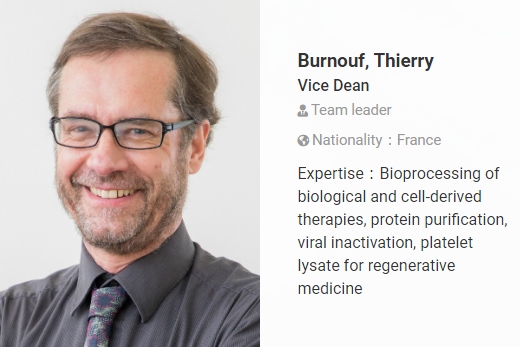
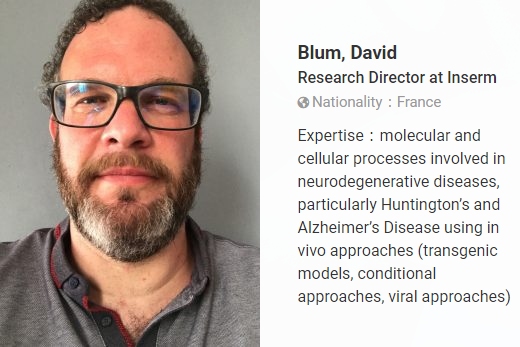
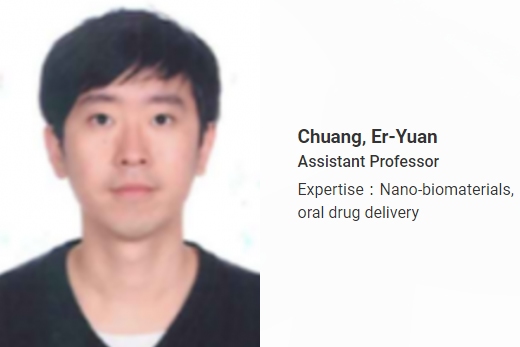
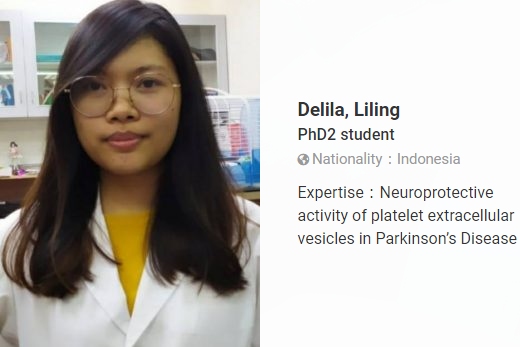
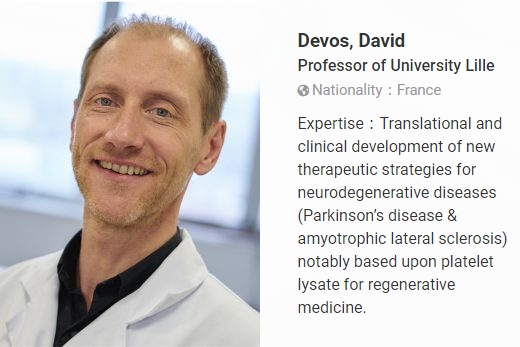
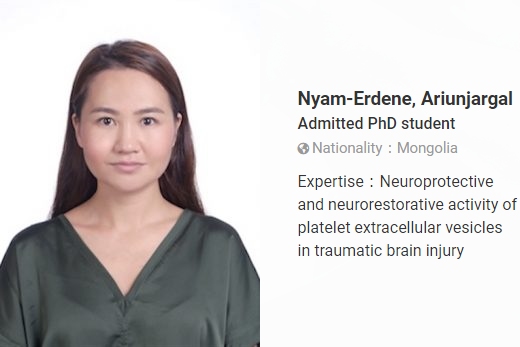
We work on dedicated platelet proteome and platelet extracellular vesicles preparations for treatment of neurological pathologies:
This work is carried out in collaboration with Inserm and ULille (Lille Neuroscience & Cognition Center).
We have successfully developed, patented internationally, and published in international scientific journals, a tailor-made platelet lysate preparations (coined “HPPL”) that exerts neuroprotective and neurorestorative properties in cellular and animal models of Parkinson’s disease (PD) (published in “Biomaterials” & in “Journal of Biomedical Science), traumatic brain injury (TBI) (published in “Platelets” and in “Brain”), and amyotrophic lateral sclerosis (ALS) (original research under review by “Biomaterials”; publication in “Frontiers in Neurosciences”). In these pre-clinical studies, the HPPL can be delivered by the intra-cerebroventricular (ICV), topical, or intranasal routes depending upon the severity of the pathologies and the duration of the treatment envisaged to improve patients’compliance with the treatment. Our data are unveiling that the HPPL, which we specifically developed for brain administration, is strongly neuroprotective in cellular models of ALS and PD, and mitigates microglia activation and favors wound healing and neuronal differentiation in in vitro models of TBI. We further demonstrated that intranasal delivery of HPPL has neuroprotective activity in the MPTP mouse model of PD, with significant protection of dopaminergic neurons of the substantia nigra. Interestingly, this improvement was correlated to diffusion of PF4 and PDGF-AB from HPPL into various brain areas demonstrating the capacity of the platelet secretome to diffuse into various brain areas and therefore be of possible value to modulate diverse pathologies affecting various brain areas. We have also provided evidence of significant anti-inflammatory effects, protection and restoration of neuronal integrity combined to motor improvements following sequential intracranial and i.n. delivery of this HPPL secretome in two mice models of TBI. Furthermore, this HPPL treatment provides much higher level of neuroprotection than single or combined neurotrophic factors in an in vivo transgenic mice model of ALS. 300 % survival occurs upon intermittent intracerebroventricular administration of HPPL in SOD1G86R mice, which is much higher than when administering riluzole (an approved drug for ALS).
Our data are thus clearly demonstrating the capacity of the HPPL administration to counter-balance alterations of brain homeostasis, gene and protein expression resulting from neurodegeneration and trauma, by complementary actions that include decreasing synaptic losses, restoring neuronal integrity, avoiding neuro-inflammation, and restoring cognitive and/or motor functions. Therefore, this platelet lysate biotherapy is emerging as a complementary pharmacological treatment highly capable to balance the multifaceted pathophysiological, cognitive and motor function deteriorations associated with neurodegenerative diseases and brain trauma. Through in-depth proteomics analysis we are showing that the physiological activity of the HPPL is associated with the richness of the platelets (the natural healing cell of our body) in complementary signaling machineries involving mediators that favor tissue repair, exert anti- or pro-inflammatory roles, and interact with immune cells. As such the platelet secretome which we use for brain administration comprises a unique combination of growth factors, cytokines, chemokines, adhesion molecules, biological response modifiers, monoamines, lipids, and non-coding RNA. Functional growth factors in HPPL include platelet derived growth factor (PDGF), vascular endothelial growth factor (VEGF), brain-derived neurotrophic factor (BDNF), transforming growth factor-β (TGF-β), epidermal growth factor (EGF), hepatocyte growth factors (HGF), insulin-like growth factor-1 (IGF-1), or stromal cell-derived factor 1-α (SDF-1α). Other essential biomolecules are platelet factor 4 (PF4 or CXCL4) and CCL5 (RANTES) chemokines, among others. The HPPL secretome also includes neurotransmitters stored in platelet dense granules: serotonin (5- hydroxytryptamine, 5-HT), epinephrine, or dopamine. Thus, platelets are an abundant reservoir of bioactive neurotrophic growth factors (e.g. PDGF, BDNF, TGF- β, VEGF, PF4, EGF, b-FGF, IGF-1 etc.) and neurotransmitters that are functionally beneficial in brain trauma and neurodegenerative conditions. Besides, the platelet lysate preparations contain various populations of extracellular vesicles (p-EVs) which contain growth factors as well as non-coding RNA, including miRNA with biological functions modulating neurodegenerative disorders. We believe that these p-EVs exert a substantial physiological restorative role associated with a strong capacity to diffuse into the brain upon intranasal delivery, exerting neuroprotective activities by activating vital pathways and influencing the transcriptome and gene expression in the central nervous system, brain neurogenesis and plasticity. We are currently studying whether these p-EVs could serve as a stand-alone treatment. The patented formulation of this HPPL and particularly the introduction of a moderate heat-treatment step to remove or inactivate toxic proteins was developed so that its administration to the brain does not trigger coagulation, inflammation, nor neurotoxicity. We have demonstrated that part of the mechanism of action involves major survival pathways (i.e. Akt and Mek) and anti-ferroptotic capacity.
The therapeutic and translational rationale of this platelet lysate biotherapeutic approach is strongly supported by the fact that human platelet concentrates, the source of the platelet proteome and secretome, are an established licensed blood-derived therapy available in most countries, including Taiwan, which the country with the highest % of blood donors per capita in the world. Platelet concentrate is an “essential medicine” for the World Health Organization. Collection from screened healthy blood donors is carried out by licensed blood collection establishments (such as the Taiwan Blood Service Foundation) working under the supervision on national regulatory authorities (such as the Taiwan FDA). Therefore, the source material meets stringent quality and safety parameters. Furthermore, platelets and their lysate are anucleate, which alleviates some teratogenic safety concerns as compared to a mesenchymal stromal cell therapy. Treatments for inactivation of blood-borne pathogens, including viruses, are licensed in many countries, ensuring a high level of safety. As we have demonstrated in our studies, functional platelet secretome can be prepared from “outdated” platelet concentrates not used for direct transfusion, thereby not affecting the hospital supply. There is ample access to platelet concentrates that can be used for the preparation of clinical-grade HPPL for treating neurological diseases.
We are now conducting new pre-clinical research work (MOST 110-2314-B-038-079) to unveil the ability of the intranasal administration of the platelet secretome and/or p-EVs to diffuse into the brain and reach the hippocampus. We expect to demonstrate, based on preliminary results, HPPL ability to stimulate neural stem cells proliferation and neurogenesis in young animals, and to mitigate altered neurogenesis encountered in aged animals. The HPPL biotherapy would be shown to improve loss of cognition associated to ageing, neurodegenerative diseases, or trauma. We are convinced that our HPPL biotherapy represents one of the most promising approach for the treatment of various neurodegenerative disorders and brain trauma and have a major clinical impact.
The same HPPL product is evaluated in the repair of the corneal endothelium, a tissue of neural crest origin (published in Biomedicine & Pharmacotherapy)
1. Focosi, D., Franchini, M., Pirofski, L.-A. and 4 more (…) (2022).COVID-19 Convalescent Plasma and Clinical Trials: Understanding Conflicting Outcomes. Clinical Microbiology Reviews,35(3) |
2. Al-Riyami, A.Z., Burnouf, T., Wood, E.M. and 40 more (…) (2022).International Society of Blood Transfusion survey of experiences of blood banks and transfusion services during the COVID-19 pandemic. Vox Sanguinis,117(6) 822-830 |
3. Goubran, H., Seghatchian, J., Sabry, W. and 2 more (…) (2022).Platelet and extracellular vesicles in COVID-19 infection and its vaccines. Transfusion and Apheresis Science,61(3) |
4. Chuang, E.-Y., Huang, W.-H., Ho, T.-L. and 2 more (…) (2022).IR-inspired visual display/response device fabricated using photothermal liquid crystals for medical and display applications. Chemical Engineering Journal,429 |
5. Gouel, F., Timmerman, K., Gosset, P. and 10 more (…) (2022).Whole and fractionated human platelet lysate biomaterials-based biotherapy induces strong neuroprotection in experimental models of amyotrophic lateral sclerosis. Biomaterials,280 |
6. Hartmann, J., Bloch, E.M., Burnouf, T. (2022).Experience with COVID-19 convalescent plasma provides vital guidance to future pandemics. Transfusion,62(3) 681-684 |
7. Quiñones, E.D., Lu, T.-Y., Liu, K.-T. and 3 more (…) (2022).Glycol chitosan/iron oxide/polypyrrole nanoclusters for precise chemodynamic/photothermal synergistic therapy. International Journal of Biological Macromolecules,203268-279 |
8. Wong, C.-C., Lu, C.-X., Cho, E.-C. and 9 more (…) (2022).Calcium peroxide aids tyramine-alginate gel to crosslink with tyrosinase for efficient cartilage repair. International Journal of Biological Macromolecules,208299-313 |
9. Chuang, E.-Y., Ho, T.-L., Wang, Y.-C. and 1 more (…) (2022).Smartphone and home-based liquid crystal sensor for rapid screening of acute myocardial infarction by naked-eye observation and image analysis. Talanta,250 |
10. Burnouf, T., Jheng, P.-R., Chen, Y.-H. and 5 more (…) (2022).Near-infrared-driven photoablation of lung cancer tumors utilizing biomimetic platelet-polyethyleneimine-polypyrrole drug-free nanoparticles. Materials and Design,215 |
11. Burnouf, T., Epstein, J., Faber, J.-C. and 1 more (…) (2022).Stepwise access to safe plasma proteins in resource-constrained countries: Local production and pathways to fractionation—Report of an International Society of Blood Transfusion Workshop. Vox Sanguinis,117(6) 789-795 |
12. Burnouf, T., Walker, T.L. (2022).The multifaceted role of platelets in mediating brain function. Blood,140(8) 815-827 |
13. Burnouf, T., Goubran, H.A. (2022).Regenerative effect of expired platelet concentrates in human therapy: An update. Transfusion and Apheresis Science,61(1) |
14. Burnouf, T., Gathof, B., Bloch, E.M. and 10 more (…) (2022).Production and Quality Assurance of Human Polyclonal Hyperimmune Immunoglobulins Against SARS-CoV-2. Transfusion Medicine Reviews,36(3) 125-132 |
15. Goubran, H., Stakiw, J., Seghatchian, J. and 2 more (…) (2022).SARS-CoV-2 and cancer: the intriguing and informative cross-talk. Transfusion and Apheresis Science,61(4) |
16. Nebie, O., Buée, L., Blum, D. and 1 more (…) (2022).Can the administration of platelet lysates to the brain help treat neurological disorders?. Cellular and Molecular Life Sciences,79(7) |
17. Lin, C.-W., Wu, P.-T., Chuang, E.-Y. and 2 more (…) (2022).Design and Investigation of an Eco-Friendly Wound Dressing Composed of Green Bioresources- Soy Protein, Tapioca Starch, and Gellan Gum. Macromolecular Bioscience,22(12) |
18. Widyaningrum, R., Wu, Y.-W., Delila, L. and 3 more (…) (2022).In vitro evaluation of platelet extracellular vesicles (PEVs) for corneal endothelial regeneration. Platelets,33(8) 1237-1250 |
19. Holmberg, J.A., Henry, S.M., Burnouf, T. and 9 more (…) (2022).National Blood Foundation 2021 Research and Development summit: Discovery, innovation, and challenges in advancing blood and biotherapies. Transfusion,62(11) 2391-2404 |
20. Rethi, L., Mutalik, C., Rethi, L. and 8 more (…) (2022).Molecularly Targeted Photothermal Ablation of Epidermal Growth Factor Receptor-Expressing Cancer Cells with a Polypyrrole–Iron Oxide–Afatinib Nanocomposite. Cancers,14(20) |
21. Goubran, H., Ragab, G., Seghatchian, J. and 1 more (…) (2022).Blood transfusion in autoimmune rheumatic diseases. Transfusion and Apheresis Science,61(6) |
22. Wu, Y.-H., Hung, Y.-P., Chiu, N.-C. and 21 more (…) (2022).Correlation between drug sensitivity profiles of circulating tumour cell-derived organoids and clinical treatment response in patients with pancreatic ductal adenocarcinoma. European Journal of Cancer,166208-218 |
23. Burnouf, T., Epstein, J., Faber, J.-C. and 3 more (…) (2022).Rationale for supporting stepwise access to safe plasma proteins through local production in low- and middle-income countries: A commentary of an international workshop. Biologicals,7927-30 |
24. Belem, W.F., Liu, C.H., Hu, Y.T. and 2 more (…) (2022). Validation of viral inactivation protocols for therapeutic blood products against severe acute respiratory syndrome coronavirus-2 (SARS-CoV-2). Viruses 14(11) 2419 |
25. Delila, L., Nebie, O., Le, N. T. N. and 9 more (…) (2022). Neuroprotective activity of a virus-safe nanofiltered human platelet lysate depleted of extracellular vesicles in Parkinson’s disease and traumatic brain injury models. Bioengineering & translational medicine, 8(1), e10360. |